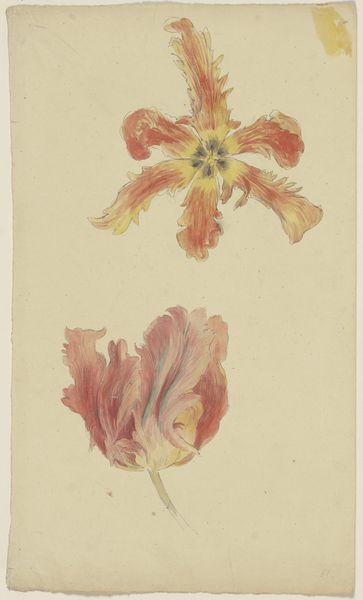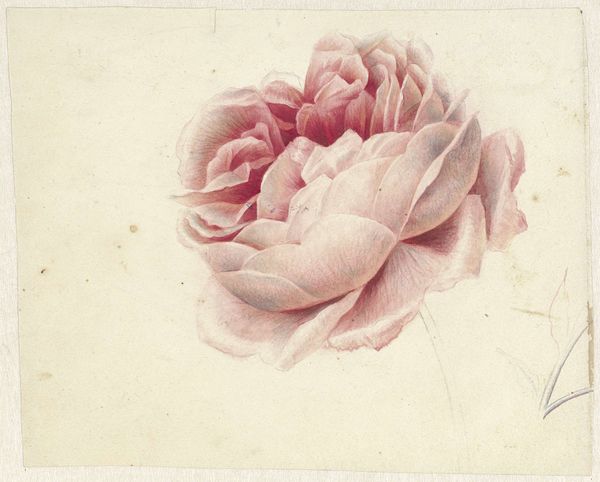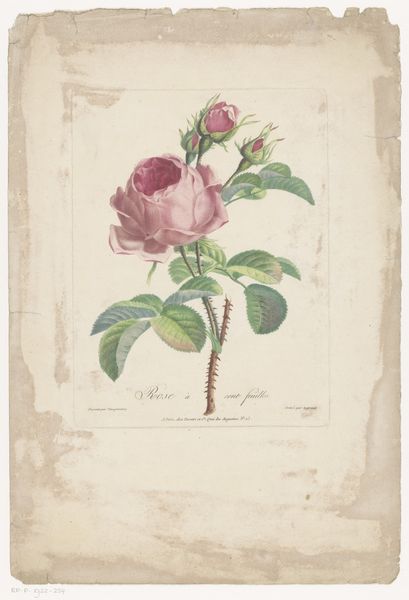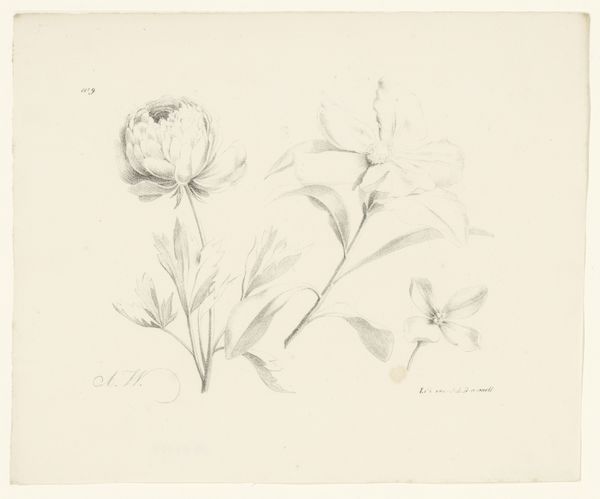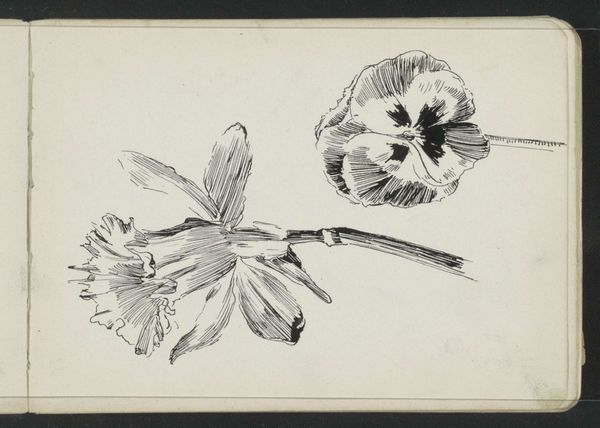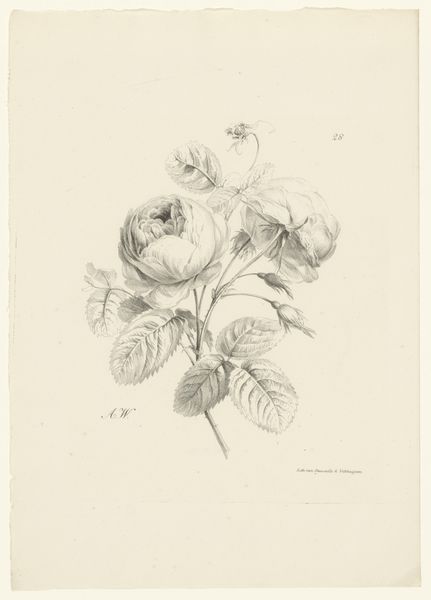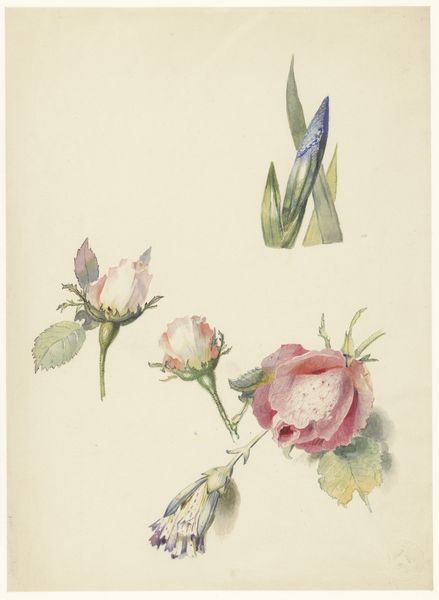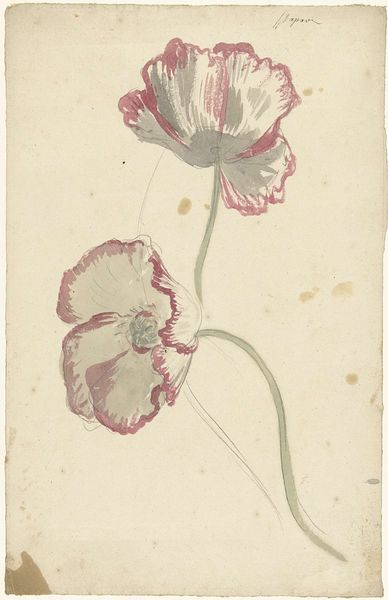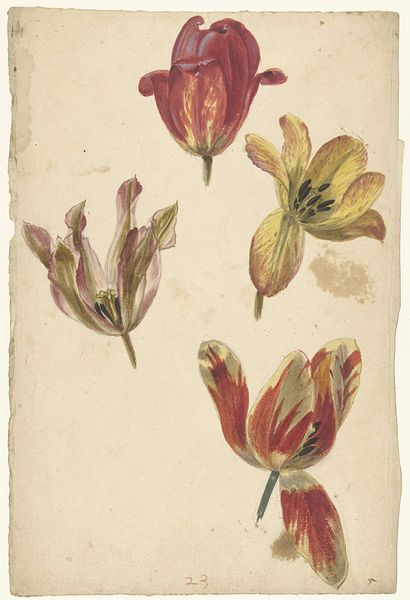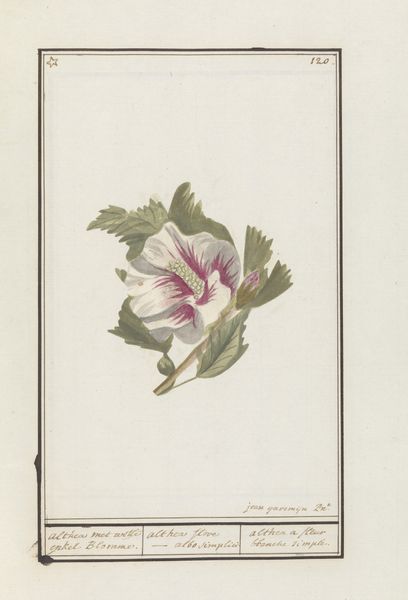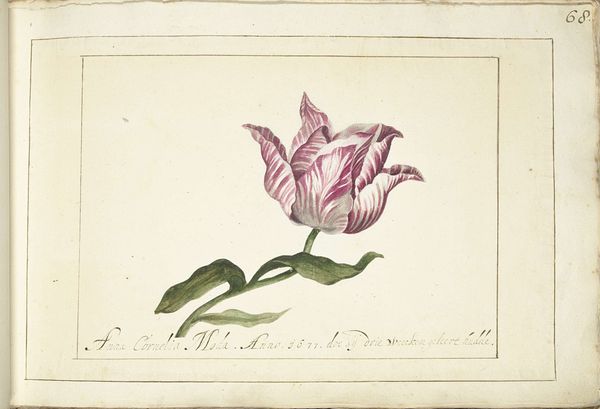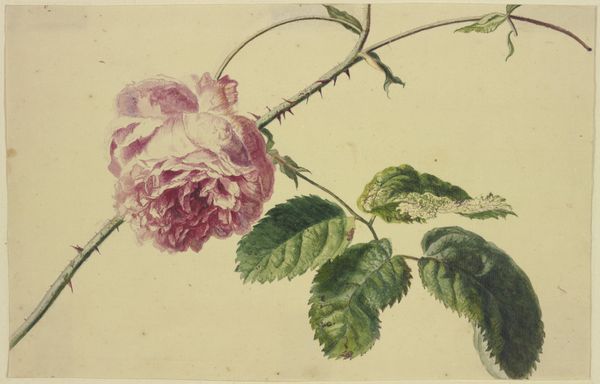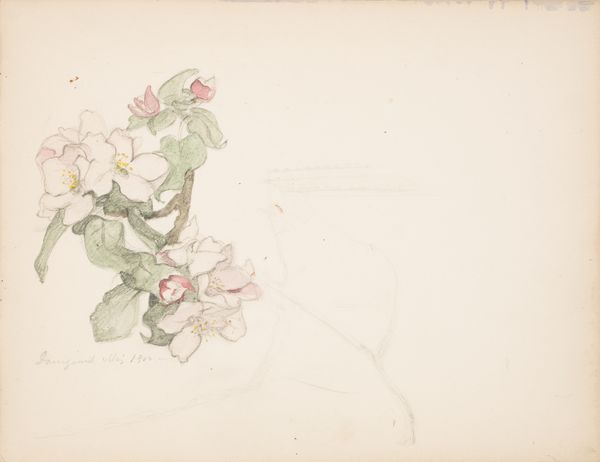
painting, paper, watercolor
#
painting
#
paper
#
watercolor
#
botanical art
#
watercolor
#
realism
Dimensions: height 223 mm, width 278 mm
Copyright: Rijks Museum: Open Domain
Curator: Let's examine "Twee rode tulpen," two red tulips, a watercolor on paper created sometime between 1874 and 1945 by Carel Adolph Lion Cachet. What are your first impressions? Editor: It's delicate, and the tulips feel very present, despite the muted tones of the watercolor. They almost seem to float on the page. What do you see in it? Curator: I am drawn to the materials themselves. Watercolor on paper—it suggests a certain intimacy and immediacy, a quick study perhaps. But it also raises questions about the availability and cost of materials during that period. The process of creating watercolors often involved a social dimension as women made art, how does the medium intersect with societal expectations about artistic production during that time? Editor: That’s an interesting perspective. I hadn't considered the societal implications of watercolor as a medium. How might the act of creating a seemingly simple flower painting challenge or reinforce existing power structures? Curator: Exactly. Consider also the cultivation of tulips themselves—once luxury items, symbols of wealth and status during the Dutch Golden Age. Even by the late 19th/early 20th century, there was still something very appealing in that bloom, cultivated and traded like material objects of status. Do you see the tension there? Editor: Yes, I think I do. There's something inherently paradoxical about using an "accessible" medium like watercolor to depict something with associations to luxury like tulips. Curator: Precisely. Understanding the processes of production, circulation, and consumption sheds a lot of light. Editor: That makes me rethink my initial assumptions about the painting's simplicity. It sounds like, understanding the means of making and historical contexts behind even simple art can provide meaningful information! Curator: Exactly. Materiality isn't just about *what* it's made of, but *how* it's made and what it all signifies in its context.
Comments
No comments
Be the first to comment and join the conversation on the ultimate creative platform.
